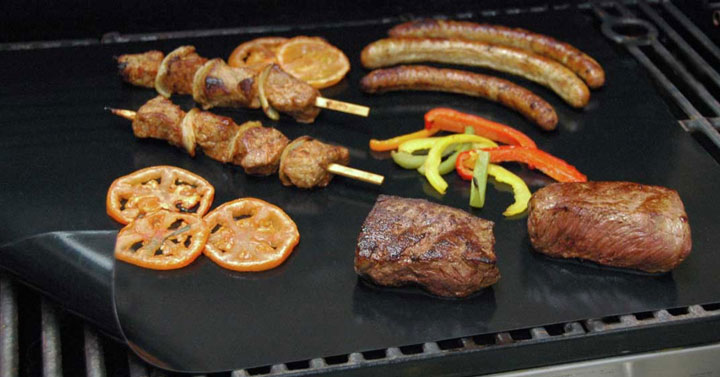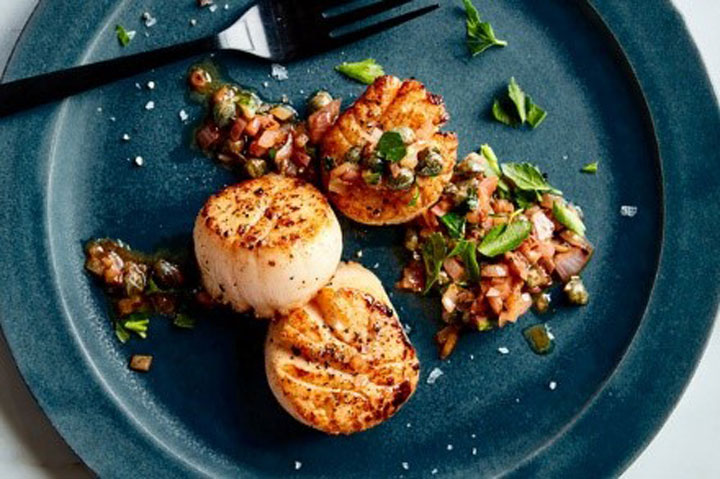
Some think grill mats emit toxic gases. We dug into the details to acquire their trust. We will.
Grill mat safety is a sensitive topic. We will discuss the materials used and how to use grill mats, as well as why some think they are harmful.
If you enjoy barbecuing, which you must or you wouldn’t be here, you should use it frequently. Why use an oven or stovetop when you can grill?
Some items aren’t good for the grate. Think fish, veggies, and breakfast foods. Chicken sticks on the grate, which is annoying to clean. Solution?
You could use a skillet, but it’s small. Foil is wasteful and difficult to maintain flat. Grill mats are great. Flat, reusable, and easily cleaned. Best of all, you can use them to cover the entire outdoor cooking area. Yes!
When Used Properly, Why Are Grill Mats Dangerous?
Grill mats can be made from a wide range of synthetic materials. Those molecules and chemicals are what give them their malleability, heat resistance, and lack of stickiness.
At high enough temperatures, some of these substances begin to decompose and release harmful gases that could make their way into your meal or into your lungs. Some of these vapors have been wrongly identified as potentially poisonous.
The non-stick surface of grill mats, on the other hand, is a big draw for many people since it makes it possible to cook liquids like eggs and pancakes without them clinging to the grates.
As an added bonus, they are inexpensive and provide significant cost savings compared to a standard outdoor gas griddle.
What are the various grill mat materials, and are they safe?
There are variations among grill mats. Each substance has unique qualities. The advantages and cons of each type are given below.
1. Fiberglass
It’s a popular grill mat material. Flexible, lightweight, and robust. Storage and cleaning are straightforward.
In order to create fiberglass, strands of glass are heated and then pressed through tiny holes. You can weave these strands into resin to strengthen and enhance heat resistance.
A grill mat is made from rolled-out fiberglass and resin with a non-stick covering.
This fiberglass is safe. When your mat starts to break down, it’s time to dispose of it, but not for safety reasons.
2. Silicone
Silicone is elastic and moisture-resistant like rubber. Silicone is manufactured but contains natural silicon.
You’re familiar with safe-to-eat silicone. You may get oven mitts or kitchen or BBQ tools made of it to prevent scratches.
Silicone is heat-resistant and suitable for cooking. Non-toxic, lead-, latex-, and BPA-free.
3. Copper
Well, this is a bit misleading: “copper” grill mats are not actually copper foil, despite their appearance. There are several brands that have absolutely no copper.
Copper mats are often comprised of flexible material with copper threads woven throughout (“copper infused,” as stated in one commercial) and a non-stick coating.
Grilling on a copper mat is supposed to be more durable because copper mats are often thicker than other grill mats. Copper is also an excellent heat conductor (hence copper-bottomed pots), so they will heat up quickly and evenly.
The primary disadvantage of many copper carpets is their inability to be rolled up for storage. That’s not so awful, but rolled mats often retain their curl, which is undesirable, and are prone to breaking and splitting, which can be hazardous.
When used properly, copper grill mats, like any other grill mat, are completely safe.
4. PTFE
Those in the market for grill mats will frequently encounter this abbreviation. Polytetrafluoroethylene is what it means. It’s a little chilling, isn’t it?
In other words, what is PTFE? Almost universally, non-stick coatings are used in grill mats. Teflon is the most widely available brand of PTFE. That’s right, the seasonings that most of your pots and pans already contain.
It is this material that causes the mats to degrade at high temperatures, prompting manufacturers to issue heat-related breakdown warnings. PTFE fails at temperatures above 570 degrees Fahrenheit.
Ingestion studies have shown that PTFE poses no threat to human health. Concerns have been raised concerning the fumes it generates when heated to high temperatures, but this isn’t unique to PTFE; there are plenty of papers out there warning us about the dangers of using vegetable and olive oils when heated to high temperatures. So why is PTFE still up for discussion? It may be secure now, but its history is less than pristine.
5. PFOA
Here is yet another awful acronym. This symbol represents perfluorooctanoic acid. It is another manmade substance, and this one is hazardous.
The manufacturing of PTFE coatings involved the usage of PFOA. That’s right; PTFE coatings were once made with PFOA. It was a crucial element of the process, however, I will not elaborate on how it was utilized.
If exposure to PFOA is a one-time occurrence, the risk is minimal. The issue is that it never disappears, so it accumulates over time along with its hazardous effects.
Quick Quiz!!!
Is it safe to cook on copper grill mats?
Copper grill mats can be used safely. Copper grill mats are non-toxic and emit no harmful fumes when used on a barbeque. Additionally, they prevent food from adhering to the grill, making cleanup easier.
Final Thoughts
Is it safe to use grill mats?
In my perspective, grill mats are like other modern conveniences: if you utilize them the way you’re supposed to, they’re absolutely safe.
The use of high-quality grill mats has greatly expanded my grilling repertoire and alleviated many of the common challenges I’ve encountered. Although they are not for everyone, I have no problem recommending them.
Hopefully, this has supplied you with the knowledge you required to make an informed decision or brought this conversation to a close. We appreciate you giving us the opportunity to set the record straight on this crucial matter.
Have a great time at the barbecue!
Welcome! My name is Emma and you are on my Internet Kitchen. Delicious food is the common love of every foodie person. This site is to share friendly and appetizing recipes. We believe for a better life, you should need better food. So, keep visiting for updated information and recipes.


